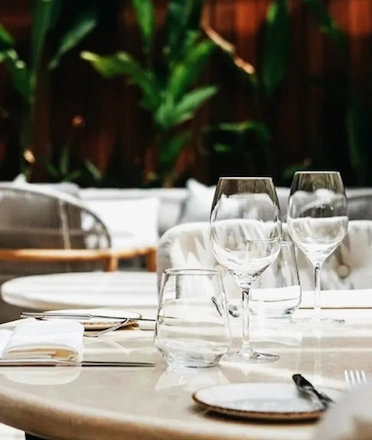Aside from its stunning natural beauty and vibrant culture, Bali is also home to a rich colonial past that has left a lasting imprint on the island. Amidst the lush landscapes and picturesque beaches, a treasure trove of colonial architecture and heritage awaits. Join us as we embark on a captivating journey through Bali's colonial buildings, unveiling the stories and historical significance behind these remarkable structures.
Bali's Best Colonial Buildings and Heritage: A Captivating Journey through History
Bali Museum (Denpasar)
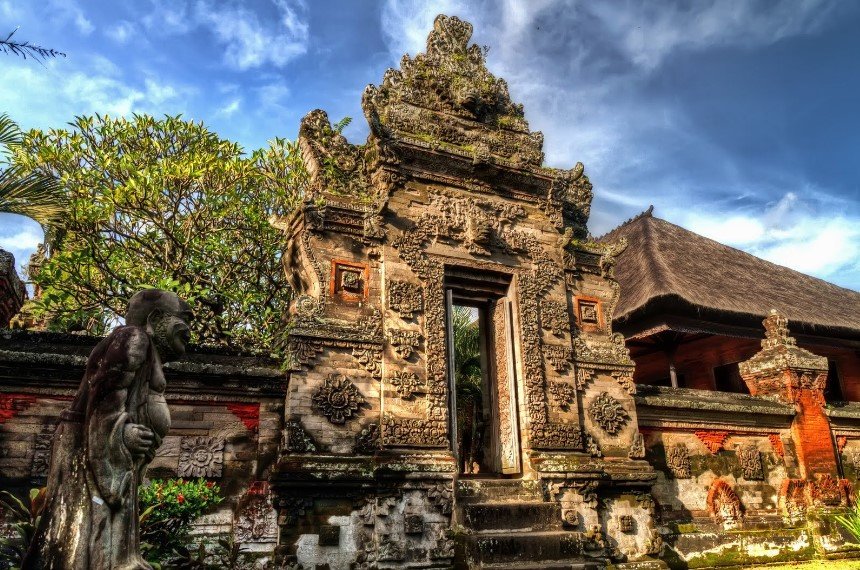
Located in the heart of Denpasar, the Bali Museum houses an impressive collection of artifacts, sculptures, and paintings that depict the island's history and cultural heritage. The museum building itself, built in the early 20th century, showcases traditional Balinese architecture with colonial influences. As you step into the Bali Museum, you are greeted by a sense of nostalgia and intrigue. The building's design reflects a harmonious blend of Balinese and European architectural styles, with its grand entrance adorned by intricately carved wooden doors reminiscent of traditional Balinese craftsmanship. Inside, the museum's extensive collection offers a window into Bali's cultural evolution, featuring ancient relics, traditional costumes, ceremonial objects, and historical photographs. One of the highlights of the Bali Museum is the Dutch colonial period exhibition, which explores the impact of Dutch colonization on Bali's society, economy, and arts. The exhibition provides valuable insights into the complexities of colonialism and its lasting effects on Bali's cultural identity. Check out Bali's other fascinating museums here!
Buleleng Harbor (Singaraja)
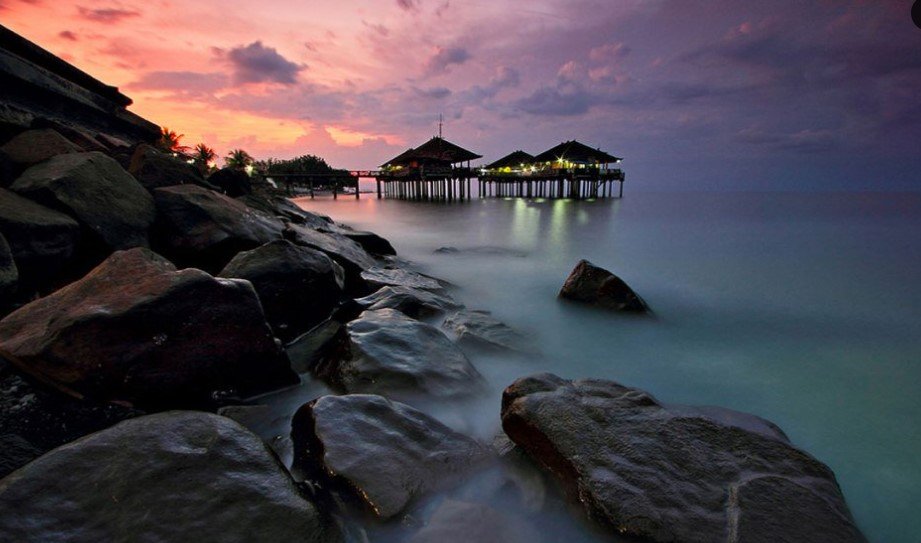
Nestled in the regency of Buleleng, Buleleng Harbor, also known as the Old Port, served as a vital trading hub during Bali's Dutch colonial era. Its robust architecture and remnants of old warehouses evoke the bustling maritime activity of the past. The harbor showcases a unique blend of Balinese, Dutch, and Chinese influences, with local fishermen preserving traditional practices along the shoreline. The Buleleng Harbor Museum provides valuable insights into the harbor's role in Bali's colonial history, offering a glimpse into the economic and cultural exchanges that took place. Today, the active port stands as a reminder of Bali's resilience and its maritime heritage, providing visitors with a deeper understanding of the island's colonial past alongside other colonial buildings and heritage sites.
Klungkung Palace (Semarapura)
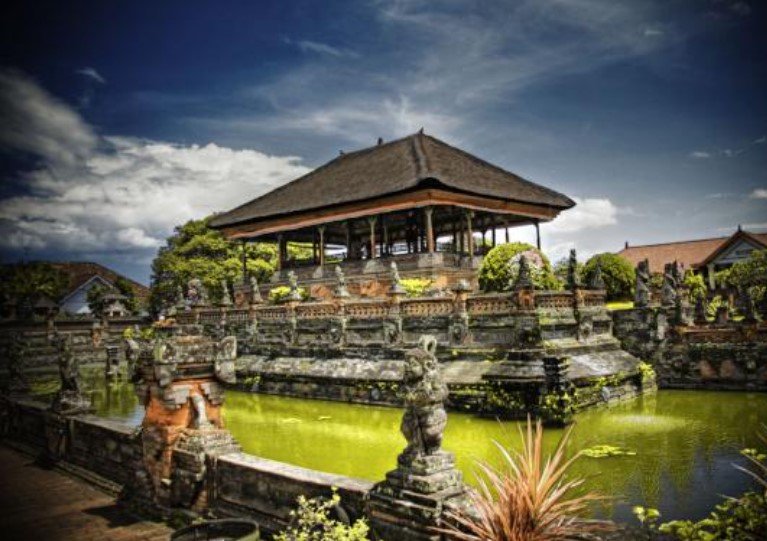
Also known as Taman Gili, Klungkung Palace was once the residence of the royal family of Klungkung. The palace complex features intricately carved gates, pavilions, and a stunning floating pavilion called Bale Kambang. It showcases a blend of Balinese and colonial architectural styles, making it a must-visit destination for history enthusiasts. Stepping into Klungkung Palace is like entering a world of grandeur and elegance. The palace's main gate, known as the Kori Agung, features intricate carvings depicting mythical Balinese figures and is a fine example of traditional Balinese craftsmanship. As you explore further, you encounter a series of pavilions and courtyards, each with its unique charm and historical significance. One of the standout features of Klungkung Palace is the Bale Kambang, a stunning floating pavilion surrounded by a serene lotus pond. This floating pavilion served as a venue for royal ceremonies and meetings, showcasing the splendor and sophistication of the royal court. The pavilion's architecture exhibits a fusion of Balinese and Dutch colonial elements, with its roof adorned with Dutch tiles and the interior decorated with ornate Balinese carvings.
Puri Agung Karangasem (Amlapura)
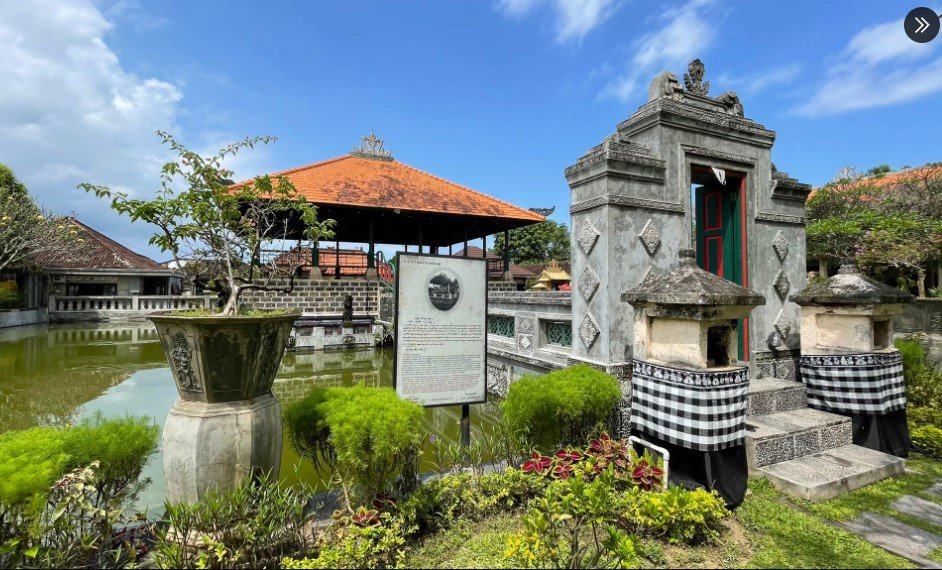
The royal palace of Karangasem, Puri Agung Karangasem, exudes grandeur and historical significance. Built in the 19th century, the palace features a series of pavilions, courtyards, and gardens. Its architecture showcases a harmonious blend of Balinese and European styles, making it an architectural gem worth exploring. As you approach Puri Agung Karangasem, you are greeted by a sprawling complex of pavilions, courtyards, and gardens. The palace's architecture reflects a fusion of Balinese and European influences, with its ornate decorations and intricate details. Puri Agung Karangasem stands as a testament to Bali's royal heritage, offering visitors a glimpse into the lives of the Karangasem royal family. Exploring the palace grounds, you can admire the exquisite craftsmanship of Balinese artisans, from the intricate carvings adorning the pavilions to the carefully landscaped gardens. Puri Agung Karangasem is a place where history comes alive, allowing visitors to immerse themselves in the grandeur and elegance of Bali's past.
Taman Ujung Water Palace (Karangasem)
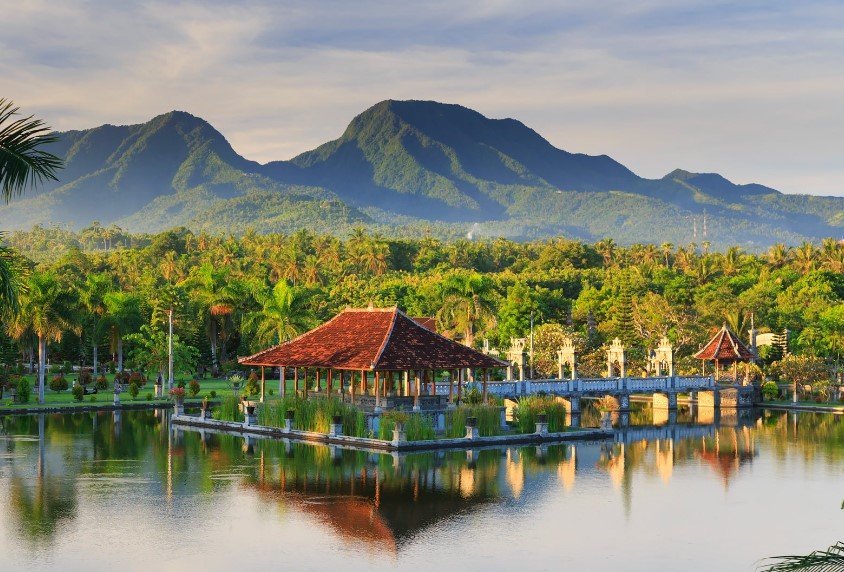
Built by the last king of Karangasem in the early 20th century, Taman Ujung Water Palace is a captivating blend of Balinese and European architectural styles. Surrounded by lush gardens and scenic ponds, the palace features intricate stone carvings, grand staircases, and picturesque pavilions, providing a glimpse into the island's royal history. Taman Ujung Water Palace is a true architectural marvel. The palace's design seamlessly integrates Balinese and European elements, creating a unique aesthetic that reflects Bali's cultural diversity. As you wander through the palace grounds, you are greeted by meticulously manicured gardens, vibrant flowers, and serene ponds. The pathways lead you to stunning pavilions that offer breathtaking views of the surrounding landscape. The palace's architecture showcases the Balinese craftsmanship through intricately carved stone sculptures and decorative details. The grand staircases, adorned with Balinese motifs, add an air of elegance and sophistication to the palace's ambiance. Taman Ujung Water Palace stands as a testament to the opulence of Bali's past, inviting visitors to immerse themselves in its regal beauty and historical significance.
Tirta Gangga (Karangasem)
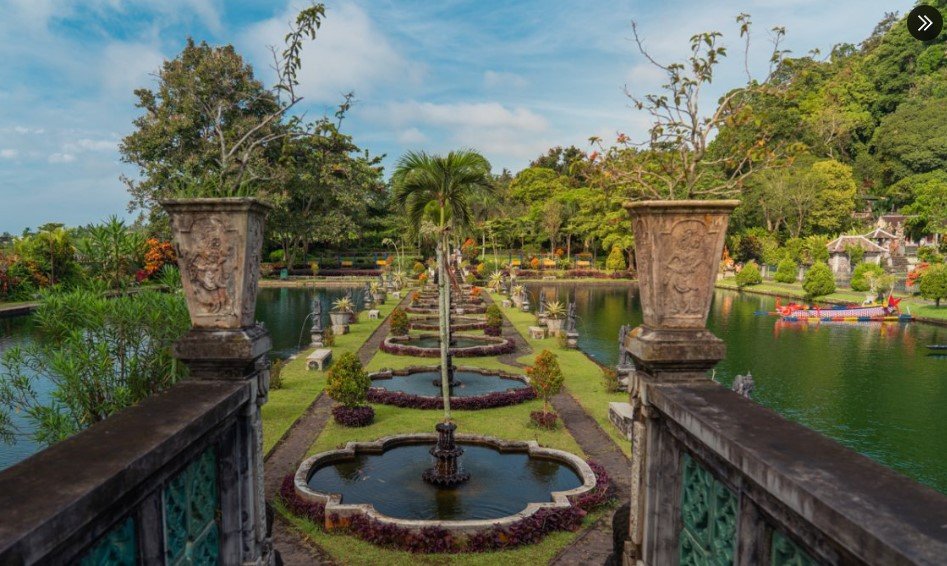
Another enchanting water palace in Karangasem, Tirta Gangga is known for its stunning gardens, serene pools, and intricate stone sculptures. Built in 1948, it showcases a fusion of Balinese and European architectural elements and offers a serene setting for relaxation and reflection. Tirta Gangga is a paradise of tranquility and natural beauty. The palace's expansive gardens are meticulously designed, featuring lush greenery, vibrant flowers, and serene pools. The architectural elements of Tirta Gangga reflect the influence of both Balinese and European styles. Stone sculptures inspired by Balinese mythology and intricate carvings add a touch of elegance to the palace's ambiance. The pools, adorned with fountains and stepping stones, create a peaceful environment that invites visitors to immerse themselves in the crystal-clear waters. Tirta Gangga is not just a water palace; it is a sanctuary where visitors can connect with nature and experience a sense of inner calm. Exploring the palace grounds, you are enveloped in a serene atmosphere that allows for reflection and rejuvenation.



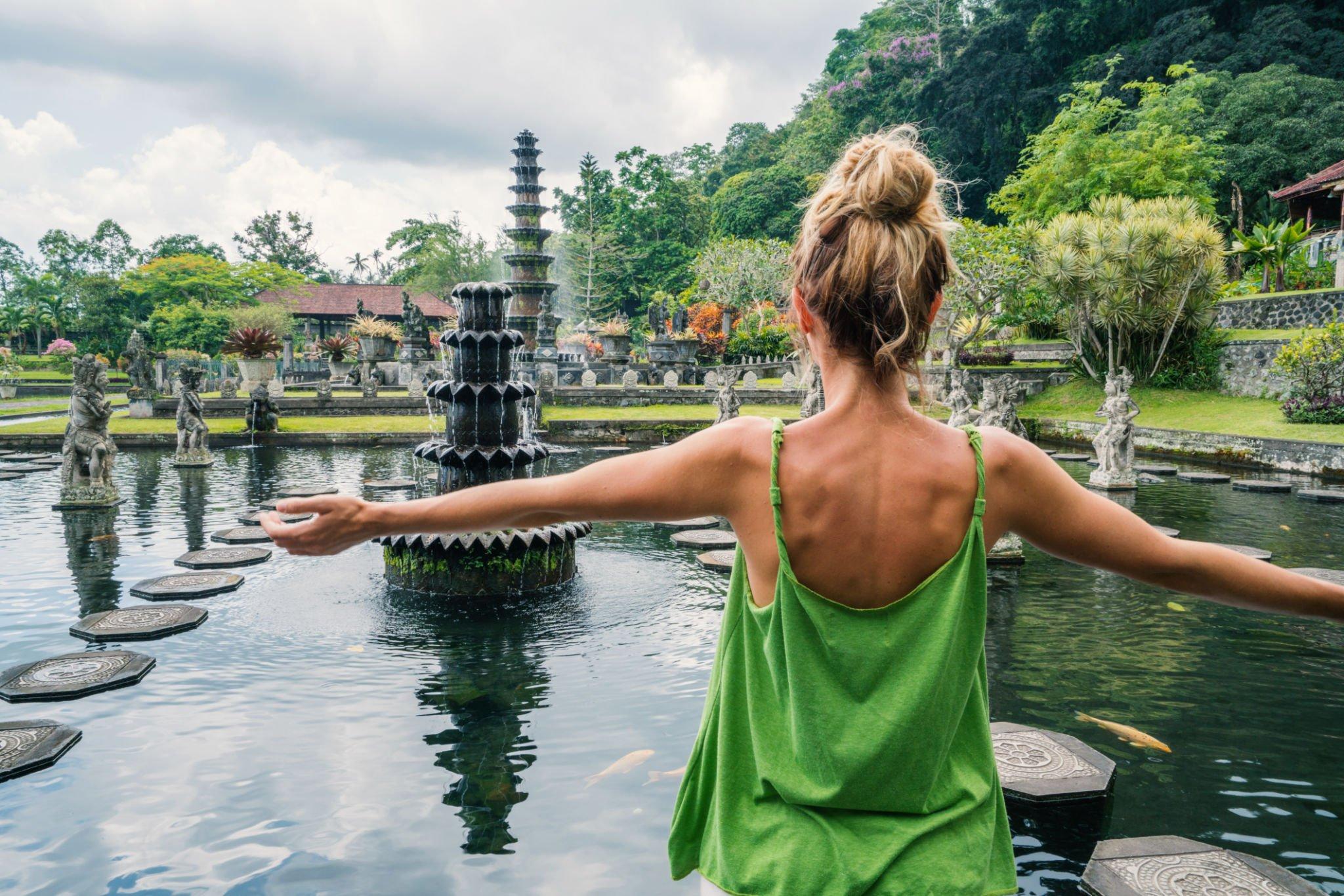
 Billy Bagus
Billy Bagus
 Jun 19, 2023
Jun 19, 2023





